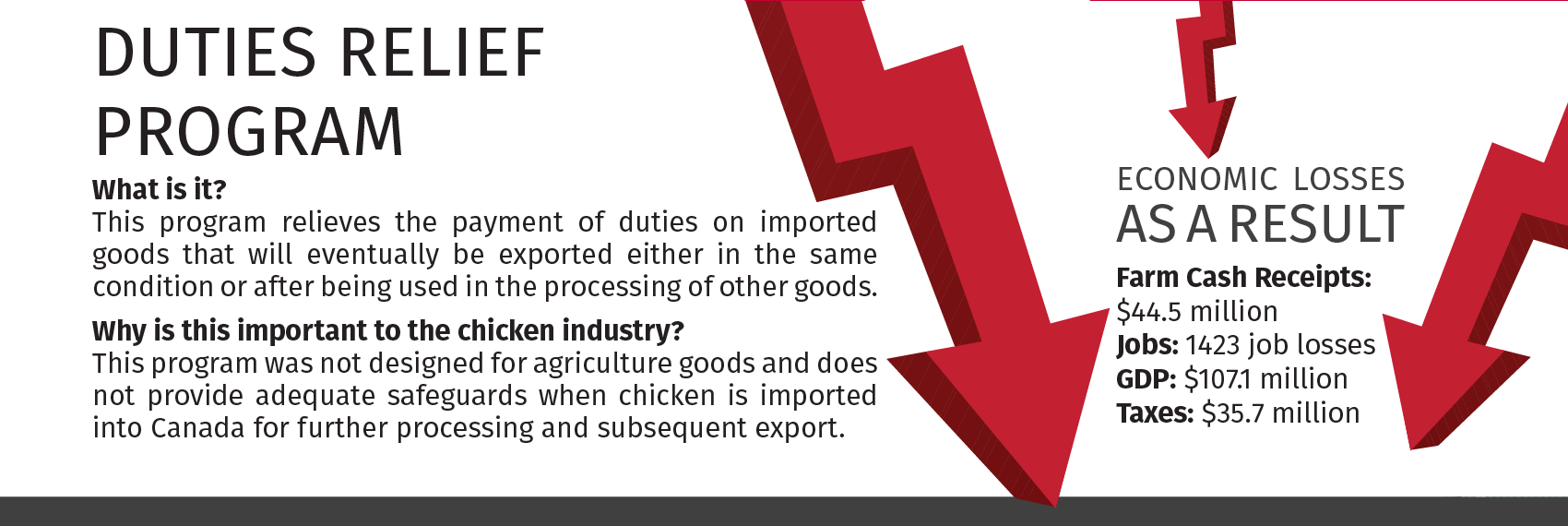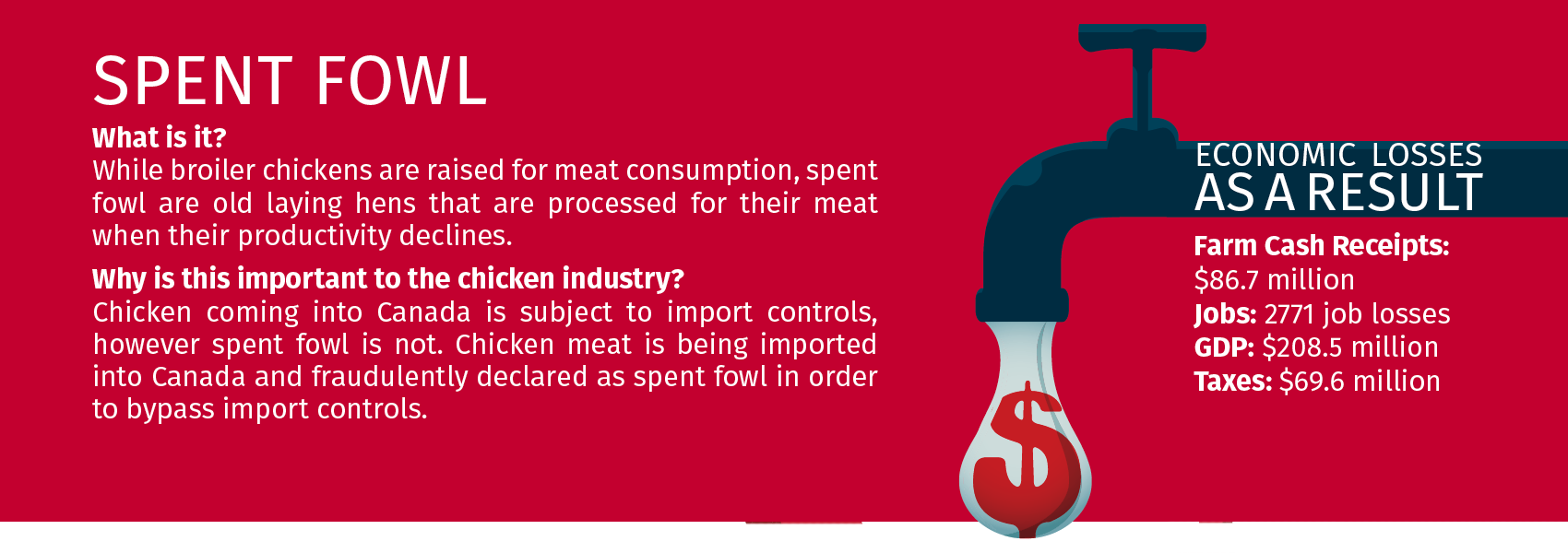


 Français
Français


Now a days, everybody wants to buy local – and hey, why not? Supporting your local farmers helps their communities, its economy, and guarantees that you get fresh, quality food from a source you know. Recently, there’s been much talk about opening the market to more imports, displacing the local and reliable foods Canadians trust, and placing the livelihoods of the farm families who grow them at risk.
Not only that, but trade rules are critical to the Canadian chicken industry so we can maintain the three essential pillars of supply management: producer pricing, production discipline, and import controls. In order to have a stable market for all stakeholders of the Canadian chicken supply chain, volumes of imported products have to be predictable in order to grow an adequate volume to satisfy Canada’s market requirements.
Import controls, one of the three pillars of supply management, continues to be challenged from several different directions: Duties Relief Program and Spent Fowl.
What are these you ask? Let’s take a look!
Duties Relief Program

What is the Duties Relief Program? According to the Canadian Border Services Agency (CBSA) website, the Duties Relief Program relieves the payment of duties, at the time of importation, on imported goods that will eventually be exported either in the same condition or after being used in the processing of other goods.
Why is this important to chicken farmers and their industry? The Duties Relief Program administered by CBSA was not designed for agriculture goods and does not provide adequate safeguards to address the potential for diversion into the domestic market when chicken is imported into Canada for further processing and subsequent re-export.
What can be done? Specifically, we have identified the following concerns with respect to the Duties Relief Program:
In light of these concerns, Chicken Farmers of Canada has made recommendations to the federal government requesting that all chicken products be administered under the Import to Re-Export Program which was explicitly designed for perishable agricultural goods. The Canadian government seems to agree with Chicken Farmers of Canada, and as part of its TPP press release, it announced that dairy, poultry and egg products would be excluded from the Duties Relief Program. However, as of yet, no actions have been taken to follow through on this announcement.
Spent Fowl

What is Spent Fowl? Spent fowl are old laying hens: a by-product of egg and hatching egg production. While broiler chickens are raised for meat consumption, spent fowl hens lay eggs and when their productivity declines, they are processed for their meat.
Why is this important to chicken farmers and their industry? Chicken coming into Canada is subject to import controls, however spent fowl is not—there is no limit on how much can be imported. In fact, in 2012 Canada imported more spent fowl breast meat than was actually produced in the entire U.S., which means that chicken meat was being imported and fraudulently declared as spent fowl in order to bypass import controls.
Unfortunately, there is no specific consumer labeling requirement for the sale of spent fowl. Even though it is imported as spent fowl, it can be sold labelled as fresh broiler chicken. This is misleading to consumers who expect to buy fresh, Canadian chicken and presents a potential danger to those who suffer from egg allergies.
What can be done? The following initiatives could prevent these potential fraudulent activities:
Our interest in international trade is a balanced one. We support Canada’s balanced trade position that allows market access gains for Canadian exporters while preserving the integrity of Canada’s supply management systems. All these challenges not only affect the quality of chicken you purchase, but the jobs and economic revenue associated with the poultry sector.